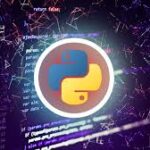From Beginner to Pro: A Comprehensive Guide to Cloud Computing with Linode, Linux, and LAMP Stack
SUMMERY
The Cloud Computing with Linode and LAMP Stack course offers an in-depth introduction to cloud computing, Linux systems, and the LAMP stack. Designed for web developers, IT professionals, and anyone looking to understand cloud-based platforms, this course teaches fundamental concepts and practical skills necessary to thrive in the field of cloud computing. With a focus on hands-on learning and practical application, students will emerge with the skills to deploy, manage, and secure cloud infrastructure using Linode and the LAMP stack.
Key Learning Areas
- Fundamentals of Cloud Computing: The course begins by explaining the core principles of cloud computing, distinguishing it from traditional computing models. Students learn about different cloud deployment models, including private, public, and hybrid clouds, and explore the benefits of each. The course also covers the three main cloud service models:
- Infrastructure as a Service (IaaS): Provides virtualized computing resources over the internet.
- Platform as a Service (PaaS): Offers a platform allowing customers to develop, run, and manage applications.
- Software as a Service (SaaS): Delivers software applications over the internet, on a subscription basis.
Learners also discuss the benefits of cloud computing, such as scalability and cost-effectiveness, as well as common challenges, such as security concerns and data privacy.
- Deploying Cloud Servers on Linode: Linode, a major IaaS provider, is a central focus of the course. Students are taught how to set up and configure a Linode account, create virtual machines, and manage network settings. Using Linode’s cloud platform, learners gain hands-on experience in deploying web applications and configuring security settings. Students also learn to use Linode’s command-line interface (CLI) to automate tasks like creating virtual machines and managing backups, making server management more efficient.
- Linux Basics: A crucial component of cloud computing, Linux is covered in detail in the course. Students learn about the Linux file system, commands, and basic administration tasks. They explore the history and architecture of the Linux operating system, with a focus on navigating the command line interface (CLI) to manage directories, perform administrative tasks, and automate tasks using shell scripts. As Linux is the most widely used operating system in cloud infrastructures, this knowledge is essential for cloud professionals.
- Installing and Configuring the LAMP Stack: The LAMP stack—Linux, Apache, MariaDB (a MySQL alternative), and PHP—is one of the most popular software stacks for web development. This course teaches students how to install and configure each component on a Linode server. Learners set up Apache as the web server to serve content, configure MariaDB for database management, and write PHP scripts to interact with the database. The LAMP stack is widely used to develop and deploy web applications, making it an invaluable tool for aspiring web developers and system administrators.
- Securing and Hardening Linode Servers: Security is paramount in cloud computing. In this course, students learn best practices and industry standards for securing Linode servers. They explore how to harden servers, configure firewalls, and set up SSH keys for secure authentication. The course emphasizes how to protect web applications and infrastructure from common threats, ensuring that learners can confidently deploy secure, stable applications in a cloud environment.
- Managing and Monitoring Linode Resources: Once a server is deployed, proper management and optimization are critical. Students learn to use tools like Linode’s monitoring system to track performance metrics, configure server settings for optimal performance, and troubleshoot common issues. Learners are also introduced to Linode’s backup and snapshot features, which allow for the creation of backup copies of cloud instances, ensuring data safety and availability.
- Deploying and Managing Web Applications: In this course, students learn how to deploy and manage web applications on a Linode server. They explore file uploading, DNS configuration, and how to use the command line to manage virtual hosts and databases. This knowledge enables students to create and manage their own web applications and understand the intricacies of cloud-based web development.
- Hands-On Learning and Assessments: The course prioritizes practical, hands-on learning. Students complete exercises that involve deploying cloud servers, configuring LAMP stacks, and managing Linux systems. A final project requires students to deploy a real-world web application on a Linode server, demonstrating mastery of the course content. This project-based approach ensures that learners can apply their knowledge in practical, real-world scenarios.
Course Requirements and Audience
The course requires basic computer skills, but no prior experience with programming or cloud computing. It is designed to be accessible to anyone with an interest in cloud infrastructure, whether they are beginners or experienced IT professionals.
This course is ideal for:
- Web developers who want to learn how to deploy and manage web applications on a cloud platform.
- IT professionals new to cloud computing who want to familiarize themselves with the Linode cloud platform.
- Linux beginners who need a solid understanding of command line operations and basic system administration.
- System administrators looking to strengthen their knowledge of server security and best practices.
- Entrepreneurs and small business owners who want to build and manage their own cloud-based web applications.
- Students or individuals pursuing a career in cloud computing or web development who want to learn cloud infrastructure, Linux, and LAMP stack deployment.
Conclusion
The Cloud Computing with Linode and LAMP Stack course provides a comprehensive introduction to cloud infrastructure, server management, and web application deployment. Covering fundamental cloud computing concepts, Linux administration, and the LAMP stack, the course is ideal for anyone looking to enhance their skill set in cloud-based platforms and web development. Through practical exercises and real-world projects, students will gain valuable experience and be well-prepared to succeed in the growing field of cloud computing









